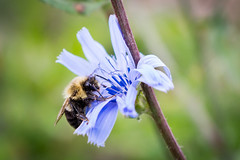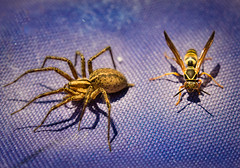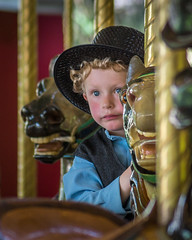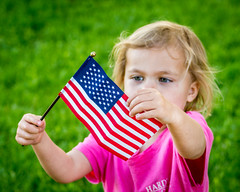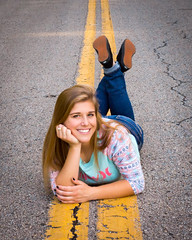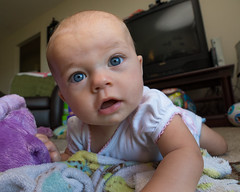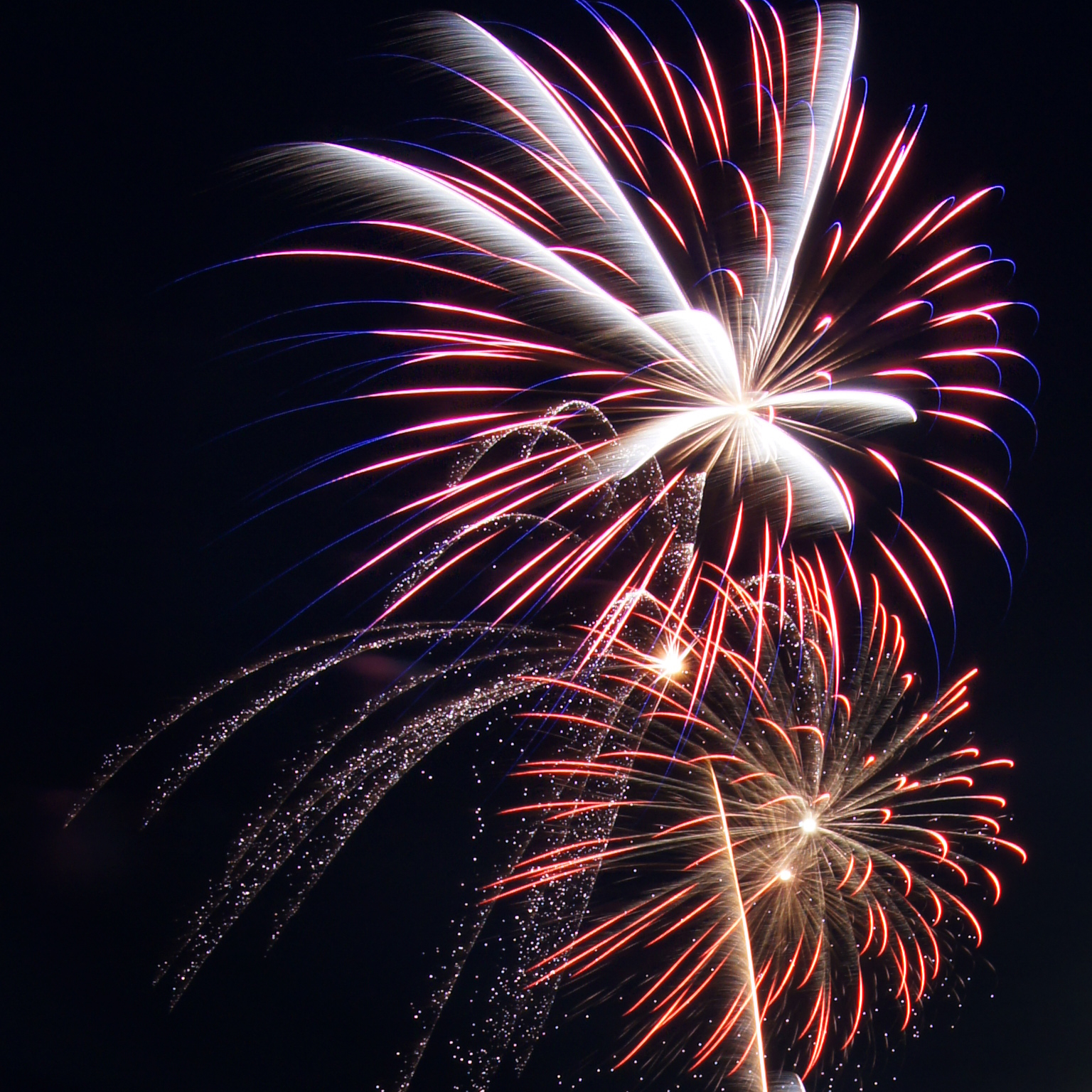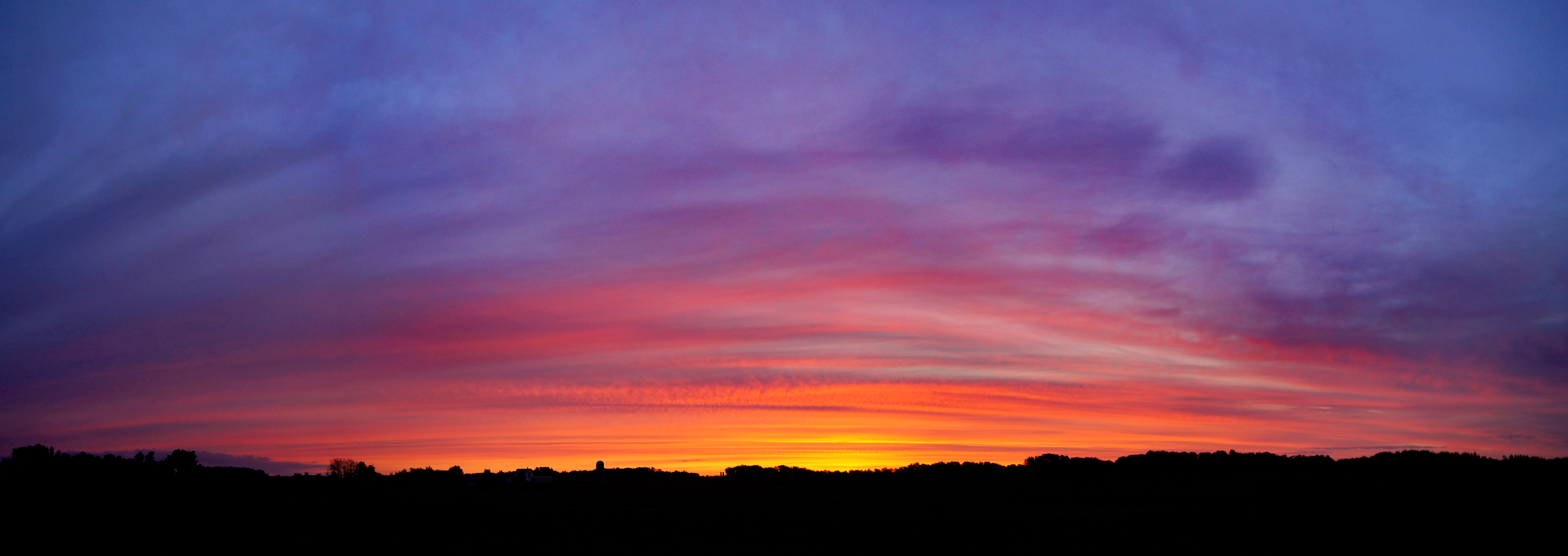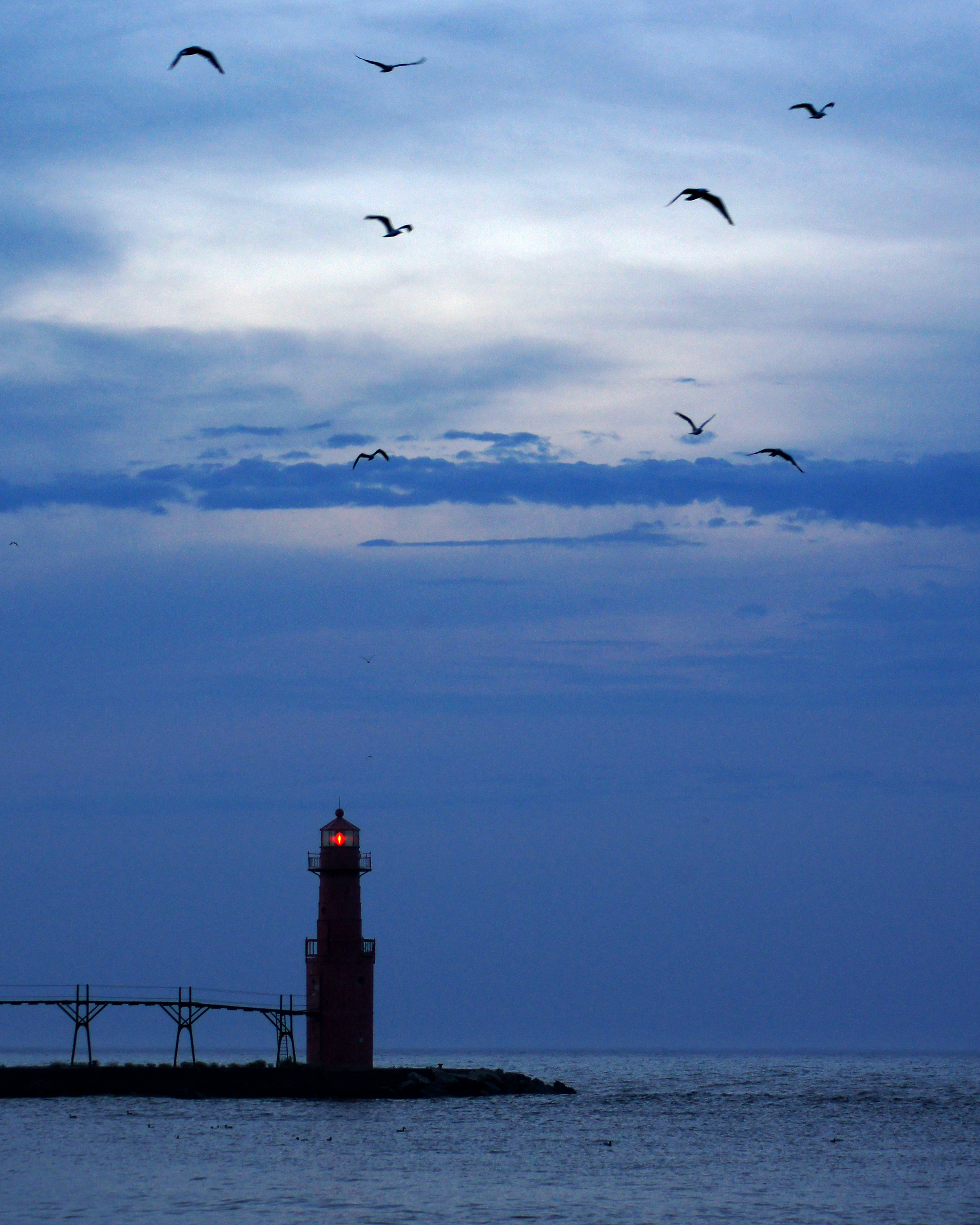Pops Digital
Conspicuous Display
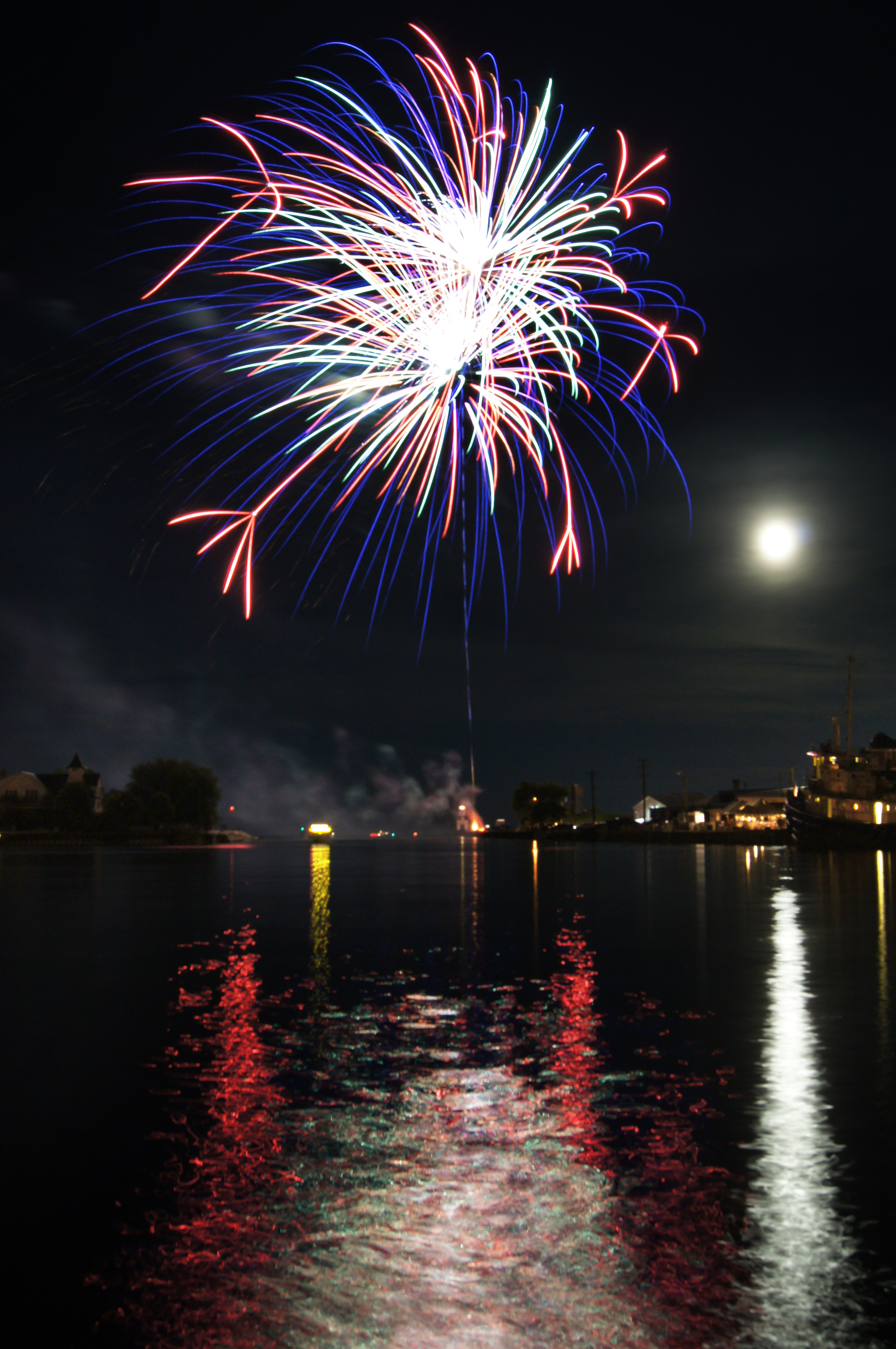 This is another shot from this year’s fireworks show at Kewaunee’s Trout Festival. (7/15/11)
This is another shot from this year’s fireworks show at Kewaunee’s Trout Festival. (7/15/11)
Again, the firework’s bold burst, the reflection off the water, the full moon and the detail of the harbor at night combine to make this one of my favorites.
I have a hand full of other images of the Trout Fest fireworks that I will be posting now and then. Check back regularly. And, by all means, feel free to share the link to theses posts with others.
Depending on the size of your monitor, you may be able to see a larger version of this image by clicking on it.
Harbor Lights
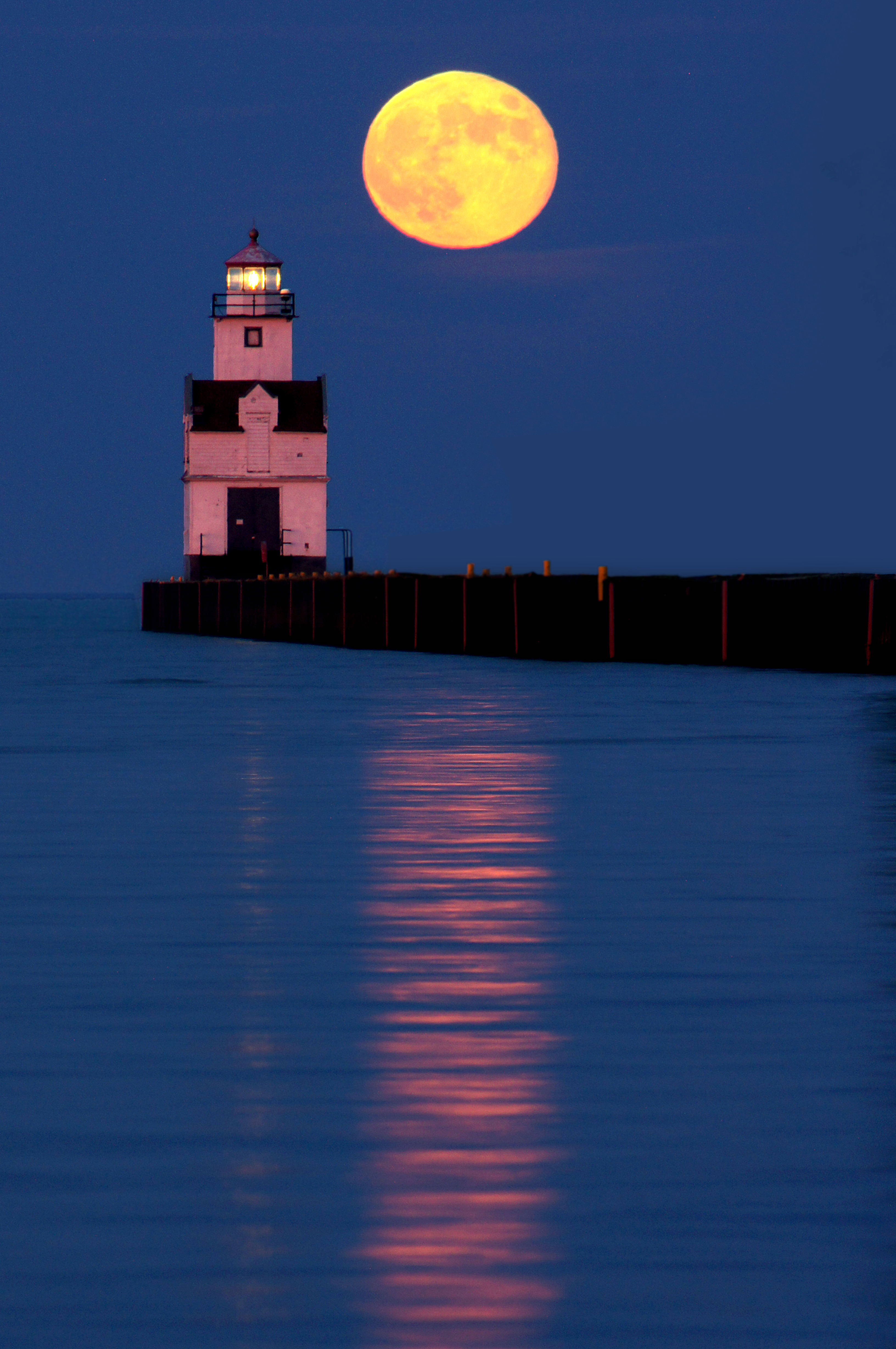 The full moon staged a dramatic entrance near the Kewaunee, WI lighthouse on Friday, July 15, 2011.
The full moon staged a dramatic entrance near the Kewaunee, WI lighthouse on Friday, July 15, 2011.
It was the first night of Kewaunee’s annual Trout Festival. I had scouted out the area and selected a spot to take photos of the upcoming fireworks show. While waiting, the moon slowly emerged from the horizion – starting out to the left of the lighthouse and moving directly behind the lighthouse and beyond, as you can see. 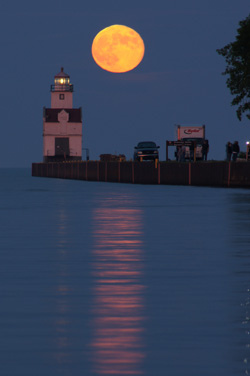
I was excited to be able to be in the perfect spot to catch the two together. There was one spoiler, though. The pier to the lighthouse happens to be the site of the fireworks launch. The technicians putting on the fireworks show were on the pier, as were their vehicles and equipment. Photoshop to the rescue!
The image to the right is the original, untouched, photo that I snapped. The moon and lighthouse together still make a cool image, but I thought they would be better without the distracting clutter. It took a little time to digitally clear the pier, but I think the final product was worth it.
Feel free to leave a comment and give me your opinion.
If you like this post, spread it around by sharing it with your friends.
To see a larger version of the main image, simply click on it.
Hollyhocks in Digital Paint
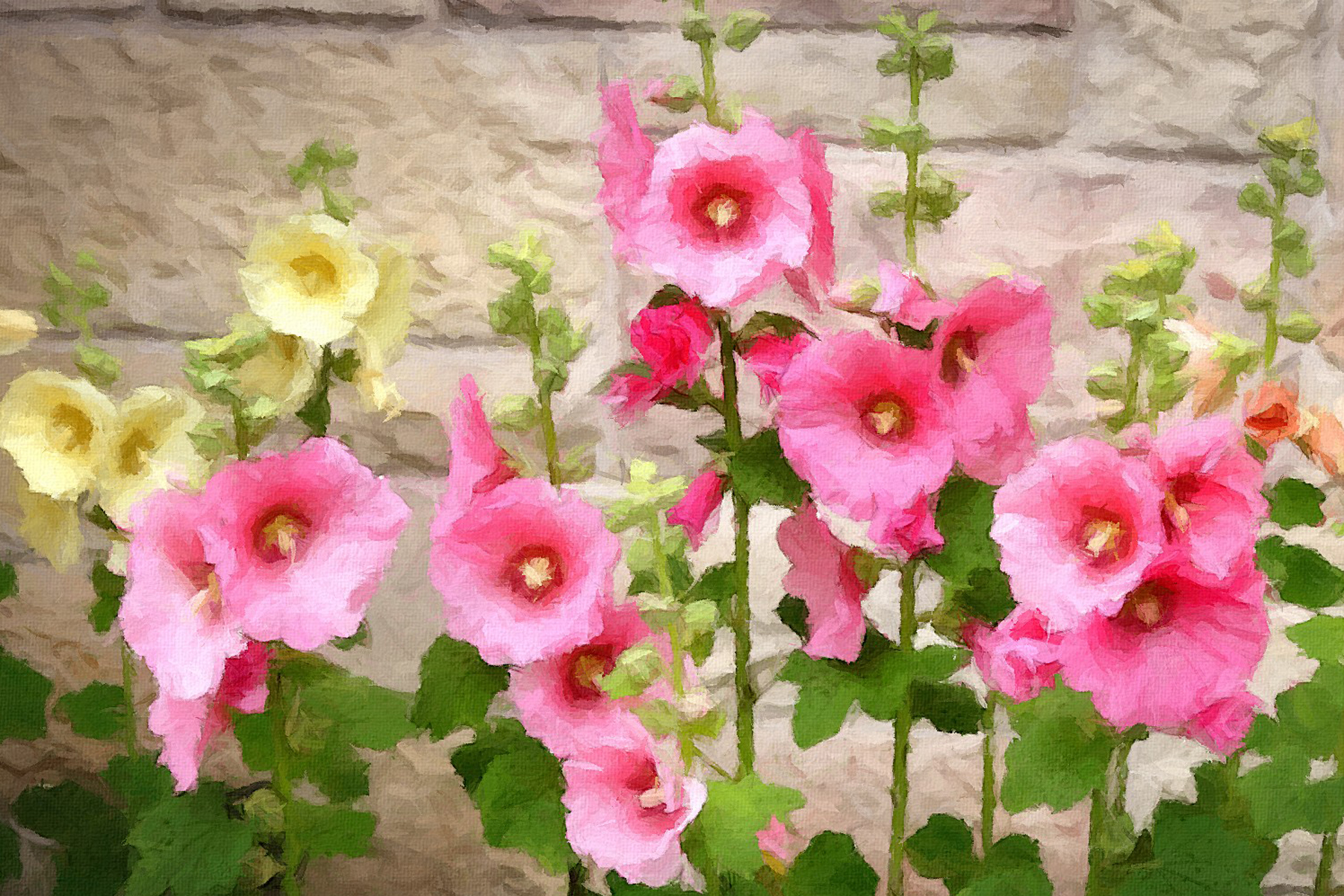
One of the things I love about digital photos is the way you can easily manipulate the images. I almost never post a photo straight out of the camera. There’s always tweaking to be done. It might be simply cropping the image for maximum effect, straightening a crooked image, correcting the color, contrast, brightness, etc. Even beyond making a photo look it’s best, you can easily make a photo look totally different. This is a perfect example.
The other day I returned a book to the Algoma Public Library and on my way in I noticed a group of hollyhocks. My artist’s eye thought that would be a good image to experiment on. I liked the colors and the texture of the stone wall behind them. To the right is the original photo I snapped. I left myself plenty of room to crop it. When I look at the original, I really don’t see anything particularly special about these flowers.
I opened the image in Photoshop and tweaked the brightness and contrast, cropped it, then saved it. I then opened up another image editing software called FotoSketcher. It’s a free program I recently found and am just starting to play with. It allows you to convert a digital photo to a variety of different art styles, such as pencil sketch, oil pastel, watercolors, etc. It also has a number of options for aging a photo, increasing saturation and adding a frame or text.
I imagine any real artist who works with oils would probably snicker and scoff at this type of creation. Yet, if I were to actually pick up a paint brush or pastels, you’d get a lot of stick-people level images. Not being familiar with those kind of mediums, I really don’t know what I’m doing with things like brush size, number of strokes, edge intensity and such, so I trust the software to do the heavy lifting. There are a lot of adjustments the software allows you to make. I just fiddle around until I find something that appeals to me. A true artist, could probably do much better.
On the image above, I simply selected one of the oil painting modes and fiddled.
My artistic medium is digital photography, and I don’t expect that to change, but adding another digital twist to the images and a free tool to the digital tool box keeps things interesting.
If you’re interested in the FotoSketcher software (remember, it’s Free) you can down load it here: http://www.fotosketcher.com/
To see a larger version of the main image at the top of this post, simply click on it.
Full Moon and Fireworks
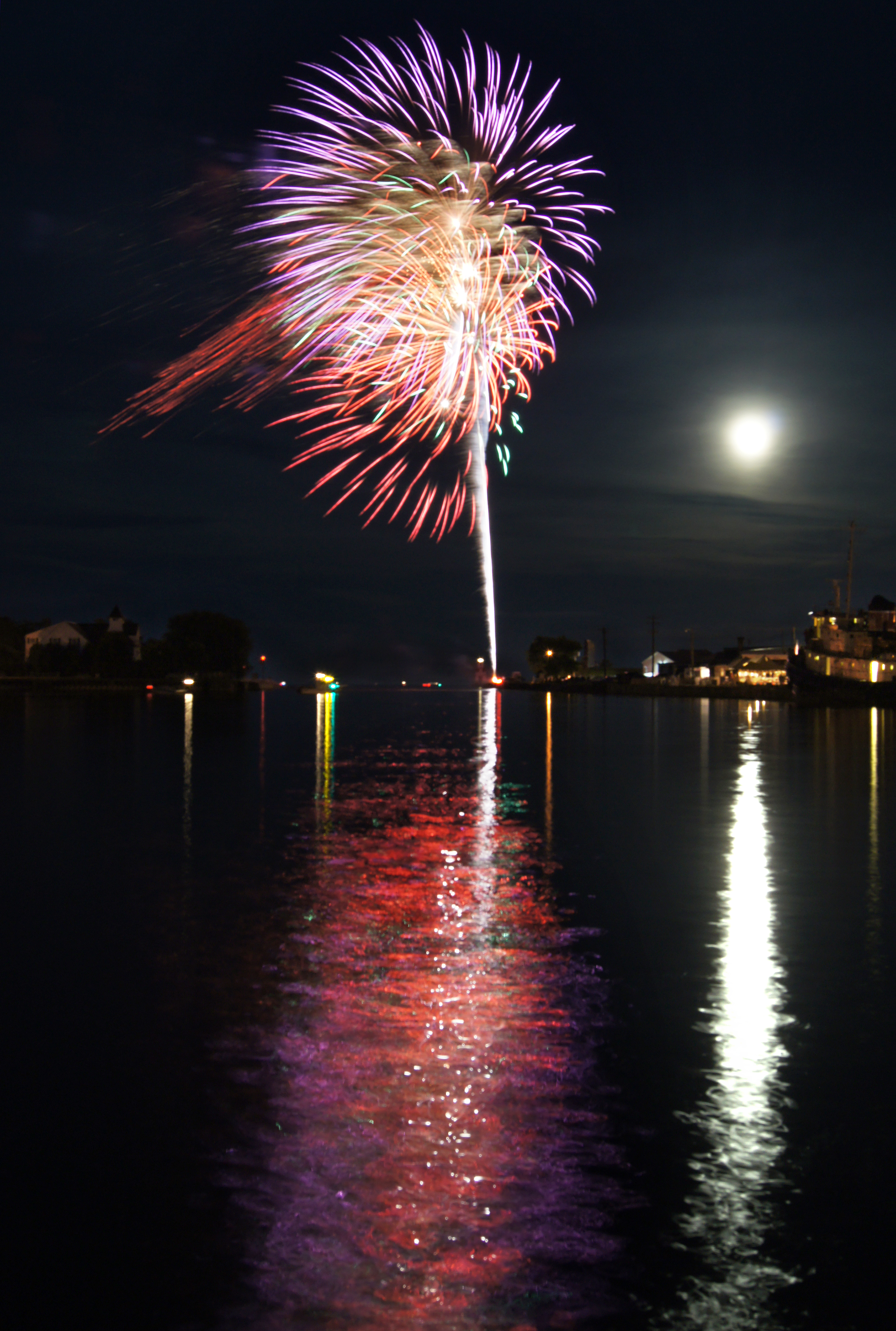
The folks who attended the 2011 Kewaunee Trout Festival enjoyed two spectacular displays…the fireworks show and a full moon.
I positioned myself at nearly surface level with the Kewaunee harbor in order to capture the reflection off the water. I think the reflections are as appealing as any other part of the images. In fact, I’m considering combining a number of the firework reflections to create a colorful image of its own.
This was my first opportunity to capture fireworks with my Sony SLT-A55V. I wish the fireworks show was a few hours long, rather than a few minutes. I need that kind of time to really experiment with settings and angles, etc.
For my photography friends, here are some of the specifics… Of course, I had the camera on a tripod, had it in manual mode, on the “Bulb” setting and used a remote trigger…F/11.0, ISO 200, 13-seconds, 28.0 mm.
I’m pleased with a number of the images I captured and will be posting more, so check back. Or, better yet, just subscribe to the RSS Feed.
Both of these images (especially the smaller one) are better when bigger – so click them to see a larger view.
Farm Field Sunrise
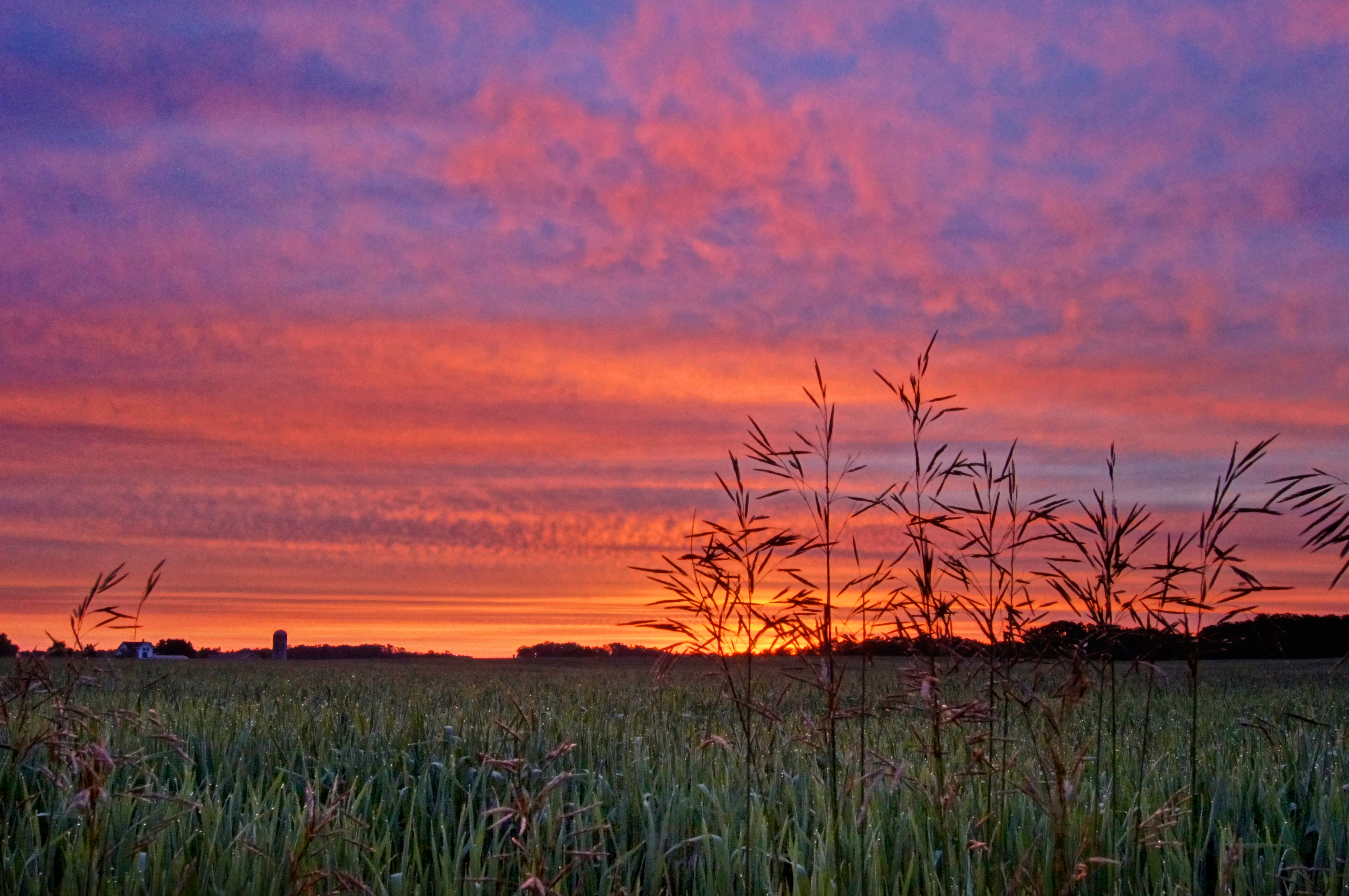
Here’s a view of this morning’s sunrise (07/14/11) from my back yard – taken at the edge of a farm field.
Our home is surrounded by farm fields. It gives a mostly clear view of the sky in all directions. Which is why take a lot of sunrises and sunsets.
The panorama image below was taken the same morning, a little earlier than the above view.
Billboard Beauty
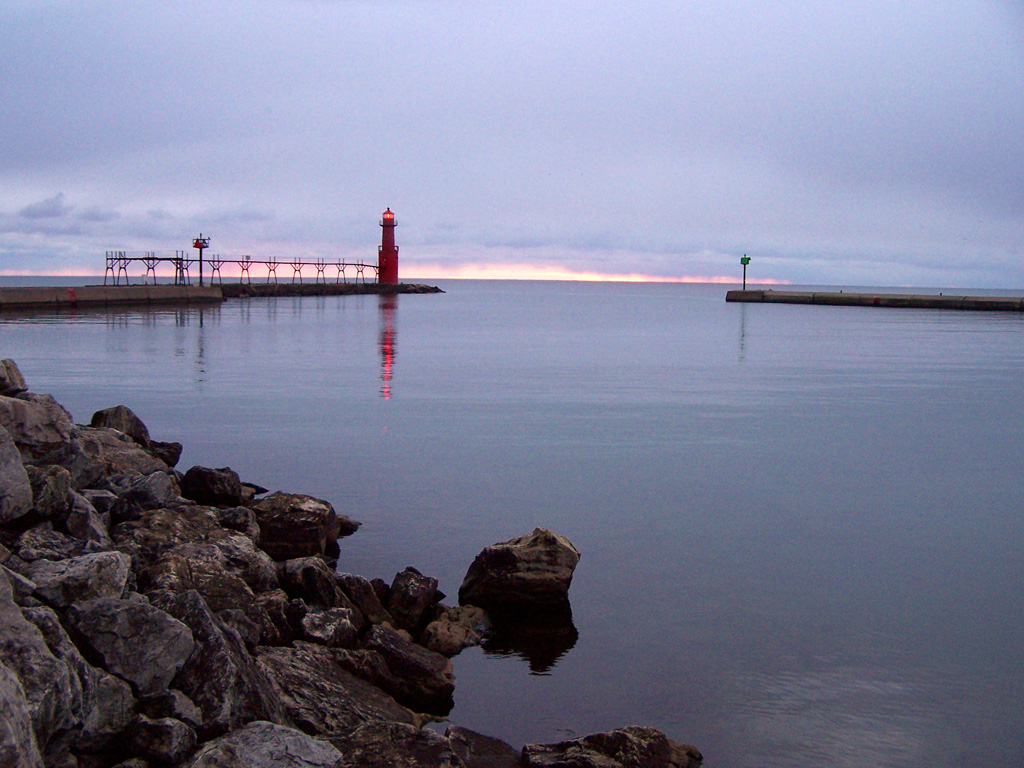
Someone recently asked me if I sell my photos. Yes I do…anytime I can. I’ve sold a good number of prints in a local store and I’m working on stepping up my game and expanding to other markets.
I recently sold one of my photos to a billboard company that ended with an an unexpected and humorous twist. (At least from my perspective.) Here’s the story…
I’m gaining a little bit of a reputation as a local photographer with some good pictures of this area. Last February, a billboard company called me, looking for a picture of the Algoma lighthouse and harbor. I sent them some samples to choose from. They wanted something that offered plenty of open space for adding their message and was generally blue in tone.

I asked them what the image would be used for and they said their client, Dairy Dreams, wanted a 12 ft by 6ft billboard to use during an open house they were planning in the spring. I thought it would be pretty cool to have one of my images blown up to 12×6 size.
They selected the photo above. I had previously posted a cropped version of this photo on this blog under the title Between a Rock and a Calm Place. (The image to the right.) After we settled on the conditions of use and a price, I re-sized the image to proper proportions for their purposes, sent it to them and asked their design artist to send me a copy of the finished design.
A few weeks later I received email from the designer with an attachment of the billboard image. Needless to say, I was excited to see how they used my photo. I opened it up, looked at it for a moment and then burst out laughing. (See the image below.)
I never would have guessed they would use my clean, serene, harbor scene to promote Biogas Anaerobic Manure Digesters. I guess it fit with the image they are trying to convey about their manure digesting process.
All in all, I was glad to make the sale and happy that a whole new group of people would see my work. My only regret was that I never had the chance to go by during their open house to see it in all it’s full-size glory.

The Bee – Close Up and Personal
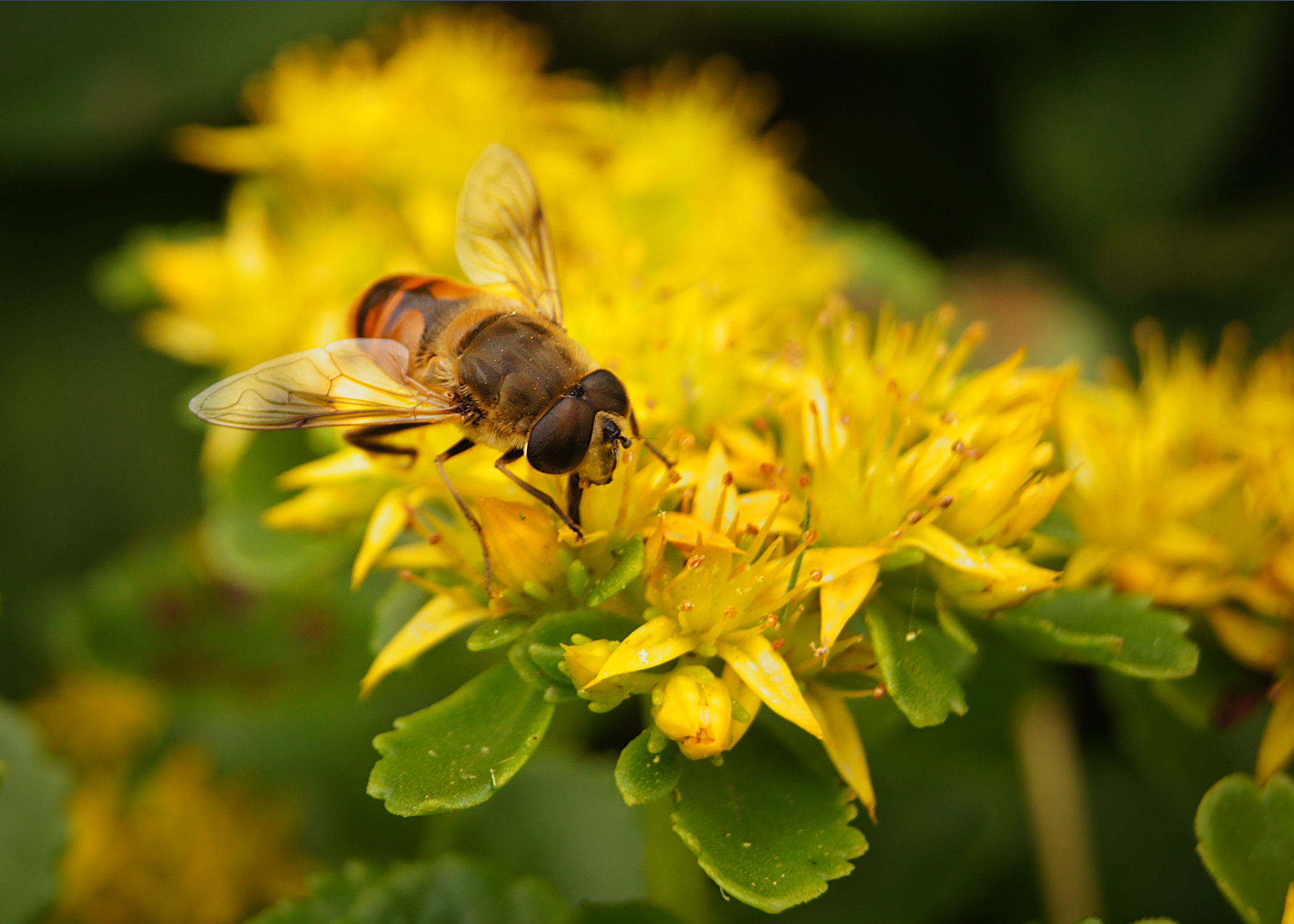
I don’t have a lot of time to travel to scenic places around the world – or even in my own area – so a lot of my photos are taken around my rural Kewaunee County, WI home. I often take a walk around my yard and photograph whatever catches my eye. Here’s what caught my eye recently.
I enjoy experimenting with macro photography. Getting a close up view of small things and capturing detail that is not apparent to the casual observer gives me a kick. Like in this image – that little thing that sticks out of the bee’s head and the cellophane look of the wings interests me. I think the eyes look more like a pair of over-sized sunglasses, too.
This photo was taken at one of my wife’s flowerbeds on the side of our house. There were a number of bees working over these little yellow flowers.
Thankfully, no bees or humans were harmed in the process of getting this image.
(To see a larger version, just click on the image.)
A Little Privacy, Please
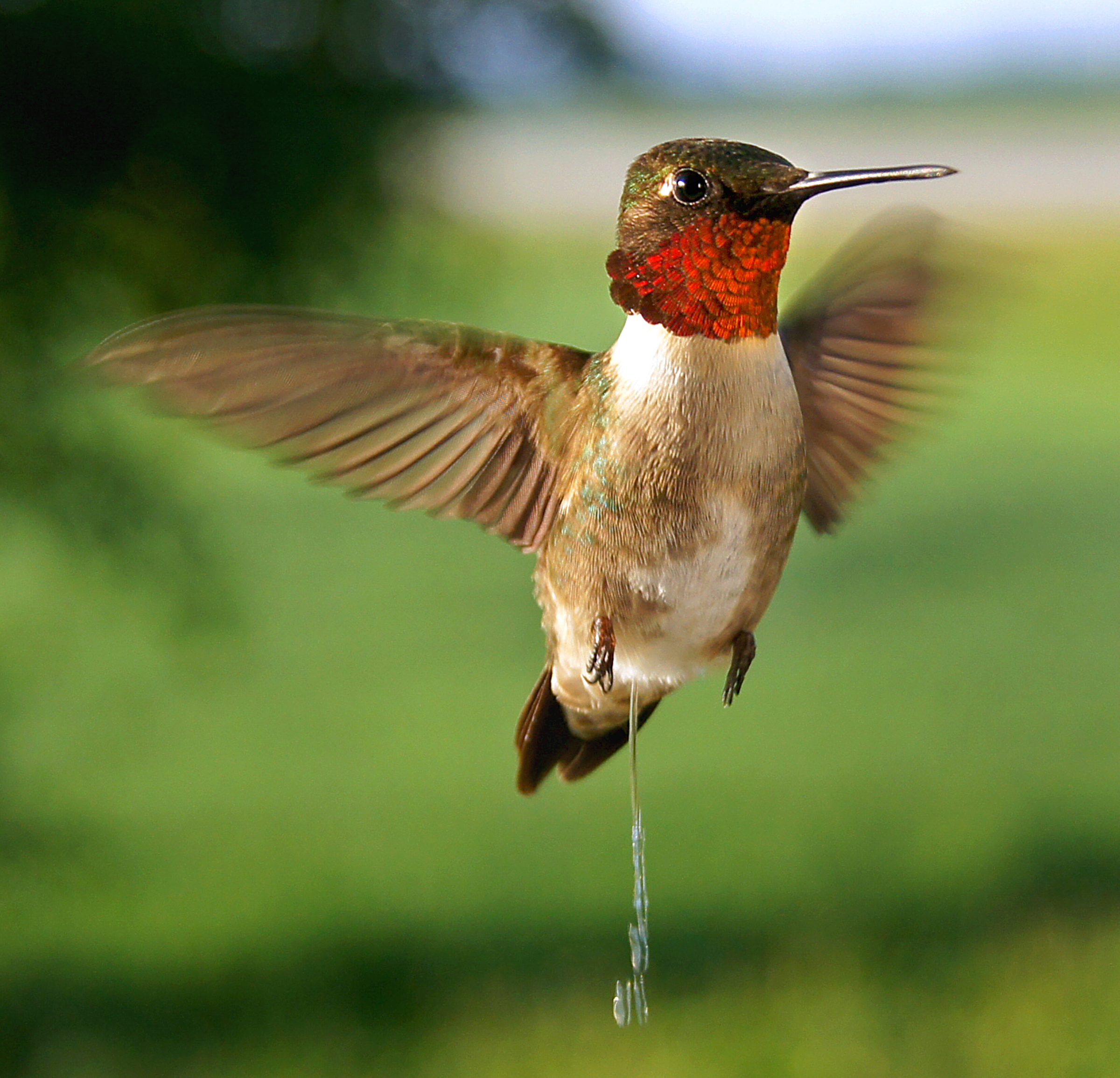
Ooops! How embarrassing! With all the hundreds of hummingbird photos I’ve been taking, it was bound to happen. This male, ruby-throated hummingbird, in all his glory, decided to take a potty break just as the shutter snapped.
I can only imagine the bathroom jokes and juvenile laughter circulating out there right now. Come on now, it’s a natural part of life. Everyone does it, right? (Although, hopefully, not in broad daylight in front of photographer.)
For those who are curious as to how the excretory system works in hummingbirds. Here’s some info from Operation Ruby Throat at www.rubythroat.org…
The Ruby-throated Hummingbird’s excretory system is typical of other birds, with paired kidneys. Liquid waste separates from digestible items in the gastrointestinal tract and goes to the kidneys, where liquid waste and ammonia (converted to uric acid before reaching the kidneys) are filtered out. Urine travels from each kidney through the ureter to the cloaca, where it mixes with solid wastes. There is no urinary bladder–yet another weight-reduction mechanism that makes flight easier–and wastes are expelled as they are produced.
(If you’re not too embarrassed and would like to see a larger version, just click on the photo.)
Can’t Hold Her Licker
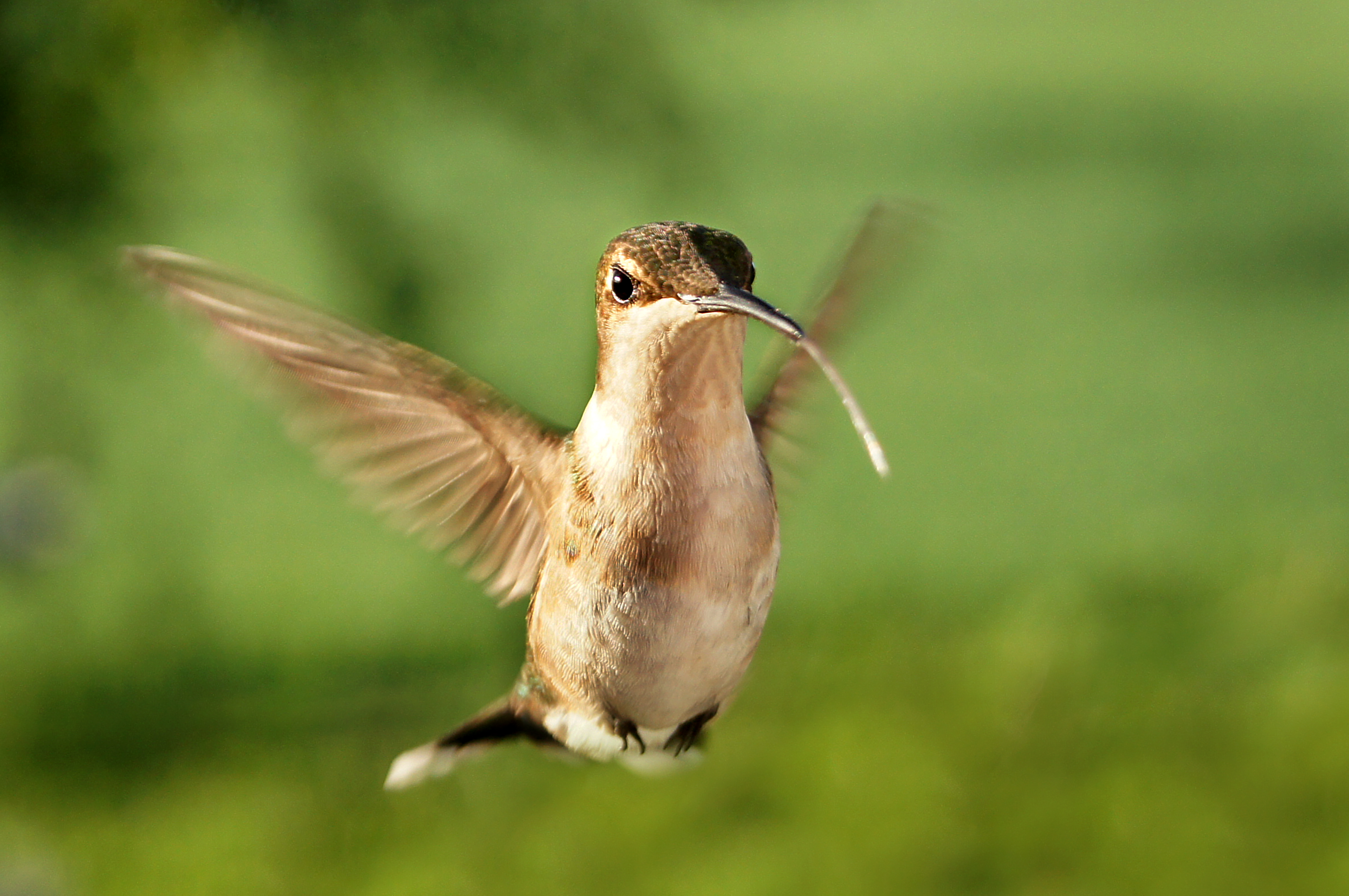
It happened so fast, I didn’t see this at the time I took the photo. This female, ruby-throated hummingbird was sticking her tongue out at me at the precise moment of the shutter snap.
It’s too bad you can’t see it clearly because the tongue was moving so fast and was out of the range of focus.
Here are some fascinating facts about the hummingbird tongue from www.worldofhummingbirds.com …
The tongue on a hummingbird is very long. It is grooved like the shape of a “W”. On the tip of the tongue are brushy hairs that help lap up nectar from a flower. A hummingbird can lap up nectar at a rate of about thirteen (13) licks per second. Hummingbirds have only a few taste buds on the tongue. Hummingbirds can taste just enough to know what is good and what is bad. They can also taste what is too sweet, not sweet enough, or just right.
(To see a larger version of this image, just click on the photo.)







